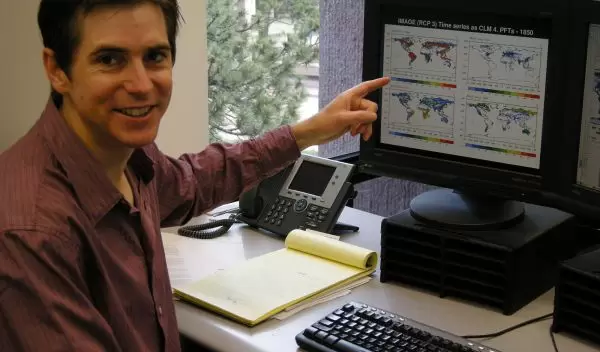
Scientists Tackle Climate Model Mystery
Imagine a climate model as a black box. You put something in, you get something out. But what happens when the output is completely unexpected?
"If you don't get the results you expect, that's when you start to ask why," said climate modeler Peter Lawrence from the University of Colorado at Boulder's Cooperative Institute for Research in Environmental Sciences.
Working with Tom Chase, a colleague at the institute, the researcher compared climate simulations from the Community Land Model--part of a select group of global models used in the Intergovernmental Panel on Climate Change's 2007 climate change report--against observations.
The model simulations weren't checking out.
Despite adding more leafy vegetation to the modeled planet's land surface, Lawrence and Chase found the simulated climate consistently produced less rainfall than real-world observations revealed.
"Imagine adding more tropical rainforest to the planet and getting a drier, more desert-like climate," said Chase. "It just didn't make sense."
Their hunch? There was a snag in the model's water cycle.
Water on land eventually makes its way into the atmosphere through two processes. In one, the sun's heat directly evaporates moisture from leaf surfaces, soils and open water sources. In the other, known as transpiration, water is lost from plants during the gas exchange associated with photosynthesis. The two processes are often described together as evapo-transpiration.
According to Chase, transpiration is an important global humidifier, contributing nearly half of all evapo-transpiration worldwide. But in the Community Land Model, transpiration was contributing just 15 percent-- instead, evaporation from bare soils was putting three times as much water into the atmosphere.
"Water is a very strong climate modifier," said Chase. "It impacts surface temperature, precipitation and cloud formation. If we can't capture fundamental hydrological processes in our climate models, we have no way to determine how human activities are affecting the climate system."
Looking closely, Lawrence and Chase found that the model's hydrology was based on drainage patterns typical of small-scale watersheds a few square miles in area. Yet, a single point in a global climate model can represent several hundred square miles of the Earth's surface.
The hydrology simply wasn't scaling to size.
As a result, the model was draining too much water laterally, leaving little moisture for plants to take up through their root systems. The atmosphere, in turn, was sponging up most of its moisture from bare ground instead of from lush vegetation.
To tackle the problem, Lawrence and Chase decided to borrow a simpler hydrology scheme from another land surface model. They removed lateral drainage from the Community Land Model's soil layers and programmed the model to allow water to pond near the surface. They also changed the way plants tapped into soil water through their root systems.
With these modifications, they found they were able to simulate global temperature and precipitation patterns in line with observations. Their black box inputs and outputs finally added up.
"Complexity doesn't always get you a better large-scale simulation. If you aren't correctly representing complex interactions, you can be much better off keeping it simple," said Lawrence.
The Community Land Model is part of the Community Climate System Model (CCSM) suite developed by the National Science Foundation's (NSF) National Center for Atmospheric Research. This particular work was supported by NSF grants ATM 0639838, ATM 0001476 and ATM 0437538. The original study on which this article is based can be found here.
-- Adriana Bailey, University of Colorado adriana.bailey@colorado.edu
This Behind the Scenes article was provided to LiveScience in partnership with the National Science Foundation.


